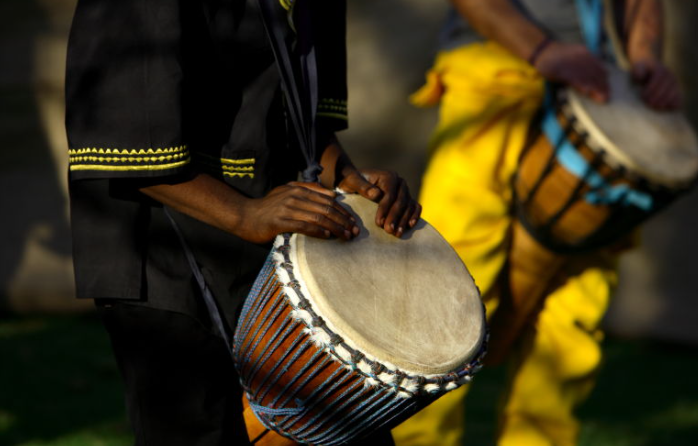
When it comes to Africa, the first reaction of many people is poverty and heat, which has almost become a stereotype of some people for the African continent. In fact, these are all subjective ideas brought by one-sided news.
Looking at the world stage, the African continent is undoubtedly eye-catching, it has a wide land, all kinds of strange flowers and grasses open here, strange animals live here, there are native African people settled life.
Africa's unique natural environment has given birth to many amazing humanities and arts, and the people in this vast world seem to have a soul belonging to nature from birth.
First, alternative sculpture: Dialogue between man and God
African primitive tribes have their own unique style in carving art, if from the rock carving period, African carving art has been tens of thousands of years of history. For African people, sculpture is not only a form of art, but also an important way for them to communicate with their gods.
African people regard sculpture as a bridge of communication between man and God, so when carving, the creators always maintain a reverence attitude to shape the image, which directly leads to the simple and mysterious color of African carving works.Taking the representative fertility worship culture in Africa as an example, the local residents all believe that the soul of a person after death can maintain contact with the living, and reincarnation is the absolute power to continue the descendants. Therefore, the image of pregnant women, mother and child often appear in African sculpture art, some works will deliberately enlarge the human reproductive organs, through bold imagination and exaggerated modeling, to highlight the African people's inner praise for reproduction, as well as the yearning for natural life.
The concept of "animism" is basically a common understanding of Africans, and most primitive tribes will worship nature and believe in ancestors as the core of their religion. Whether in ancient times when scientific and technological productivity was still low, or today, Africans' awareness of nature worship has never been weak.
In the old days, people were afraid of natural disasters such as wind, thunder, rain and electricity, and they had a heart of awe for everything. With the development of The Times, African people's understanding level is also improving, but their concept of reverence for nature has not changed, so far, African masks can still see many works carved with natural creatures as prototypes.
In addition, in traditional African thinking, after death, the body disappears, but the soul will be remembered as a shelter in the earth. Therefore, the human appearance common in African carvings is the fusion of the image of their ancestors with the appearance of imaginary gods. Such carvings generally appear in sacrifices and prayers, marriages and funerals, and are sacred objects that can communicate with the gods in the eyes of Africans.
Carving on the African continent has never been more than a work of art, for the tribal people who believe in god, it has long been indispensable to life. Whether it is the head of the door frame, or the end of the ceiling bed, carved figures can be found everywhere in African homes. Here, the sculpture art has truly achieved the combination of beauty and practicality, full of mysterious and simple interest.
The "ugly" mask: the combination of wildness and power
For some people who are unfamiliar with African culture, seeing an African mask for the first time can be really scary. The strange appearance and mysterious expression are the product of the rich imagination of the African people.
If you want to classify African masks, then they can be roughly divided into three categories according to their different functional properties.
A symbol of divine authority
Weddings, funerals and weddings are usually the peak of the use of African masks. Traditional African burials have a limited period of time, as little as a week or as much as a month, during which the family of the deceased must continuously conduct the resurrection of the dead, and the sorcerer in charge of the sacrifice must always wear a mask to sing and dance.
Masks used in funerals are different from other types. In African national concepts, the messengers of the dead are white, so the sacrificial masks representing death are also painted white. The beast masks that occasionally appear in the funeral ending ceremony are also filled with some white pigments, implying exorcism and blessing.
In the initiation ceremony of some primitive tribes, the elders presiding over the ceremony would wear masks carved into the likeness of their ancestors. When the young people were brutally circumcised, they would see the "ancestors" standing in front of them in pain, and the power of the gods would help them get out of the pain as soon as possible.
In daily life, masks representing the gods are often used in medical and disciplinary activities.
Whenever there was a major plague in the tribe, traditional African physicians would not only be responsible for healing, but also wear an exorcism mask to pray.
If a woman or teenager in the group misbehaved, the respected elders would also wear a mask symbolizing the gods to punish them, on the one hand to show the noble status of the gods, on the other hand to hide the face of the punishing person and prevent revenge later.
A representative of religious culture
The primitive tribes of Africa are extremely fanatical in their belief in gods, and the masks in the shape of gods can not be worn by everyone because of their unique spiritual status.

